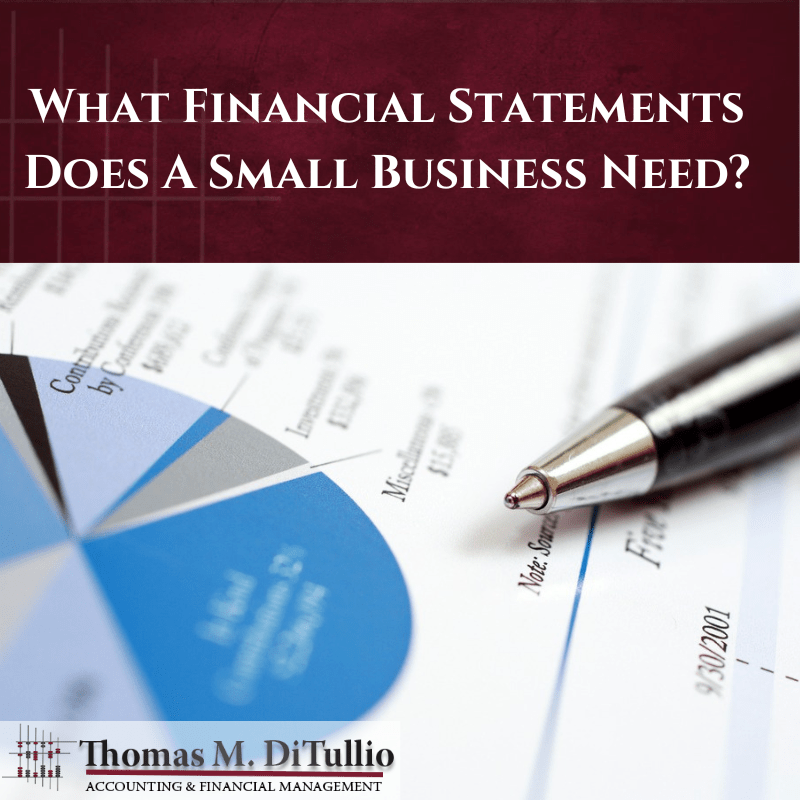What Financial Statements Does A Small Business Need?
Many business owners are intimidated by those financial statements. However, you need to learn some of the basics of these statements to get a clearer picture of your financial health. No matter how big or small your business, these three financial reports are vital to your success. The balance sheet, income statement, and cash flow statement are must-haves for your business. Let’s break down how these sheets work and affect your small business.
Balance Sheet
The balance sheet is also called the statement of financial position. This financial statement tracks your liabilities, assets, and owner-held equity. The balance sheet can indicate the approximate cash value of the business. Lenders will look at your risk and collateral, which can affect if you will receive funding for your business when you need it. There are two vital parts of the balance sheet: assets and liabilities.
Assets are everything that a business owns. For example, some assets can include signed service contracts or showroom stock. There are two types of assets: short- and long-term. Short-term assets will last for one year or less and can include cash, prepaid expenses, and inventory. On the other hand, the business must own its long-term assets for over a year. These examples include tools, property, and equipment. A company may also own intangible assets such as trademarks, copyrights, and patents.
Liabilities are everything that the business owes to a vendor or creditor. A liability may include a business loan balance. Like assets, there are short- and long-term liabilities. A business must pay all current liabilities within a year, including small business loans, payroll, and lines of credit. Long-term liabilities, including deferred income tax and mortgages, are paid over longer periods.
Along with assets and liabilities, owner-held equity is equally important. This equity is the cash value of the company. It is calculated as the assets minus those liabilities. The amount left over is the owner-held equity.
Income Statement
The income statement is often called a profit and loss statement. This statement accounts for the business’s revenues, gains, expenses, and losses. With this statement, you can gauge the profitability of the current operations. You can also use this statement to decide whether to cut or expand operations.
There are several parts to an income statement. Revenue is the income from operations and accounts. You can gain revenue from primary activities or secondary activities. Some primary activities include services rendered or product sales. Secondary activities include rent from a vacated space or accruing interest from an account.
Gains come from other future income, such as selling your assets. Expenses are derived from operations. Like revenue, these expenses can come from primary or secondary activities. Primary activities include expenses incurred from maintaining normal operating revenue. Secondary revenue often includes expenses incurred outside of the operating revenue. Losses are the value loss from selling assets, such as settling overdue taxes.
With this statement, you can see the profitability of the company. Income statements are formatted in two ways: single-step or multi-step. In a single-step statement, there will be one category for income and the other for expenses. However, these statements are not always reliable as they cannot calculate the profitability and efficiency ratio. For that reason, many small businesses use multi-step statements to separate the expense account based on their functions. Multi-step statements give owners a more rounded view of their financial health.
Cash Flow Statement
The cash flow statement is a detailed accounting of the cash generated by the business. How does a cash flow statement differ from an income statement? The income statement shows what the businesses have generated on an accrual basis. The cash flow statement will show the actual funds that have come into the business accounts. With these statements, you will know how much money is available to pay expenses or invest in the business. Any significant discrepancies between the cash flow and income statements could mean problems in business operations.
There are critical points in the cash flow statement. The operating cash flow statement is the cash paid from and to your account from the actual business operations. The income and expenses from selling and buying assets are called the investing cash flow. Investing cash flow can include buying operating equipment or selling real estate assets.
The cash actions related to the company’s stocks and bonds are called the financing cash flow. This cash flow might include paying dividends to the owners of repurchased stocks. When an owner draws on a small business account, that is known as a financing cash flow.
Cash flow statements can include other details, including document losses and gains of non-cash assets and miscellaneous cash actions. When you put this information together, you can see the location of the cash and how it moves in your business.
Understanding your financial statements can be complex. Finding reliable small business accounting services can help you to create and decipher these statements for your business. Knowing your finances is vital for any business. Without these statements, you will not know the financial health of your small business.
Need a South Jersey Accountant for My Small Business?
At TMD Accounting, we have small business solutions for you. Our family-owned and -operated South Jersey accounting firm has helped those businesses in Gloucester County for over 40 years. Whether you need help with payroll, taxes, accounting, or bookkeeping, we are your flexible and affordable way to manage your business. Schedule your consultation by calling 856-228-2205.

